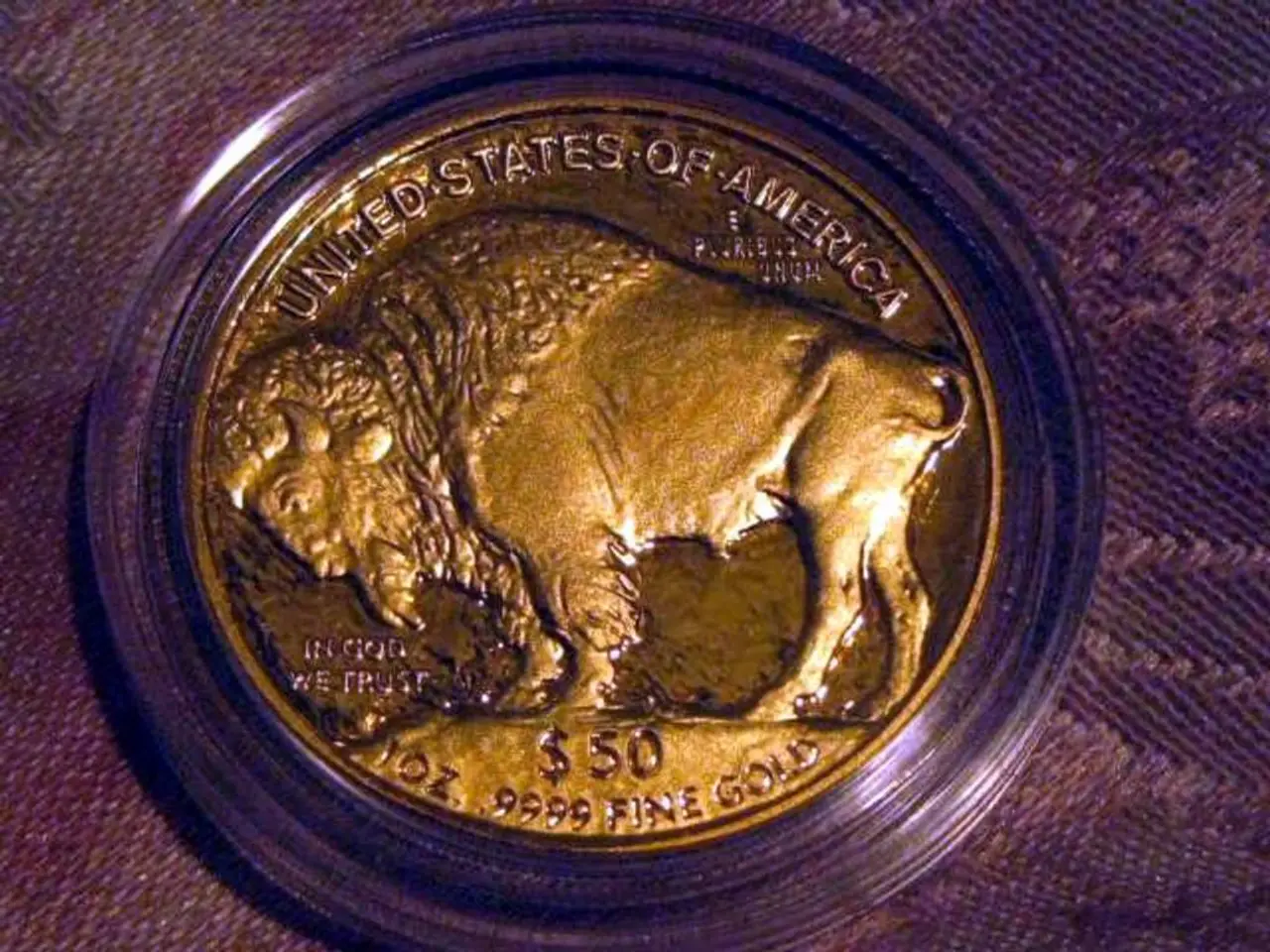Struggling with economic matters? You're in good company
The U.S. economy is experiencing moderate growth in the midst of various factors, including inflation, trade, jobs, consumer sentiment, Federal Reserve rate decisions, and tariffs.
Inflation Remains a Concern
Inflation remains a concern, with recent tariffs putting upward pressure on consumer prices. The Personal Consumption Expenditures (PCE) inflation for 2025 is expected to rise to about 2.7%, with core PCE inflation near 3.1%. This could potentially reverse some recent disinflationary trends.
Trade and Tariffs
New tariffs, particularly the 25% tariffs on autos and auto parts, are expected to significantly raise consumer costs. These tariffs are projected to reduce U.S. real GDP growth by about 0.5 percentage points per year in 2025 and 2026, with a persistent long-run GDP reduction of around 0.4%. This has also led to increased uncertainty in the business environment and pressures on the Federal Reserve’s monetary policy.
Jobs and Labor Market
The labor market remains generally healthy but cautious. Hiring has been slower than typical for this stage of expansion, with private-sector hires below 4.0% since late 2023. Layoff rates remain low at approximately 1.1%, indicating job stability. Firms appear to be holding off major hiring decisions pending reduced policy uncertainties, including those related to taxes and trade. Strong capital spending is expected to lead to improved hiring in the second half of 2025.
Consumer Sentiment
While explicit recent consumer sentiment metrics were not detailed, rising consumer prices due to tariffs and broader economic uncertainties have contributed to cautious sentiment among investors and consumers, especially in sectors like technology and autos.
Federal Reserve Rate Decisions
The Fed faces a dilemma in balancing inflation pressures from tariffs and the risk of labor market weakening. The Fed is likely to hold interest rates steady for now but might consider rate cuts later in the year, depending on how the labor market and inflation evolve. If inflation rises due to tariff-driven cost increases, the Fed may need to maintain higher rates longer, which could slow growth in credit-sensitive sectors such as housing and autos.
Summary
The effective tax rate on imported goods in the U.S. has risen above 18%. Consumers spent more in June than they did in May, with expenditures rising 0.3%, but this growth was only 0.1% when adjusting for inflation. The first glimpse at America’s second-quarter gross domestic product showed a 3% annualized growth rate, but tariffs are masking a hidden weakness in the U.S. economy.
The U.S. has added an average of just 85,000 jobs per month, which is below the breakeven employment level. The Personal Consumption Expenditures price index showed a 0.3% increase in June from May, boosting the annual rate of inflation to 2.6%. Tariffs have added to inflation, causing prices to creep higher.
The overall picture of the economy may give some reassurance that it is doing mostly okay, but the jobs and trade data are worrying. Some tariff-sensitive goods, such as washers, dryers, furniture, clothes, shoes, toys, sporting goods, and curtains, have seen a record 4.2% price surge in June. Job growth was significantly slower in July than expected.
Gregory Daco, chief economist at EY-Parthenon, believes that a recession is not necessarily imminent, but Thursday night's trade blitz and Friday's jobs report raise those odds. The events and data of this week suggest that the economy is slowing and will continue to slow through the back half of the year.
Consumers are still willing to spend their money, but they're growing more cautious. The Federal Reserve kept interest rates high again at the conclusion of a two-day policy meeting on Wednesday. The weak job growth momentum is eroding the economy's buffer against headwinds, making it more vulnerable to a recession in an environment with historic supply shocks. The average American household could face additional costs of $2,400 due to increased taxes on imported goods.
Financing for businesses could be impacted negatively due to increased consumer costs resulting from new tariffs, as the uncertainty in the business environment and the potential long-run GDP reduction may discourage investment. Furthermore, the rise in inflation due to tariffs might prompt the Federal Reserve to maintain higher interest rates, which could slow growth in credit-sensitive sectors such as housing and autos, potentially affecting business finance and investment.




